Guatemalan Food Dishes: Basic Overview
Common Ingredients
Common Cooking Methods
Courses
Meals
Key Taste
Eating Etiquette
Meal Presentation
Culinary Festivals
Influence and Fusion
Popular Types of Guatemalan Dishes
-
Stews
Guatemalan stews are hearty, often incorporating a rich blend of indigenous and Spanish influences with ingredients like meats, vegetables, and a complex array of spices.
They are a staple in Guatemalan cuisine, reflecting the country’s agricultural diversity and culinary traditions.
-
Desserts
Guatemalan desserts range from sweet, fried treats to more sophisticated, layered cakes, often featuring local ingredients.
-
Soups
In Guatemala, soups are a fundamental part of the diet, offering a comforting and nutritious meal with a base of local vegetables, legumes, and often, a protein source.
They can range from light and brothy to thick and hearty, serving as both a starter and a main dish in Guatemalan meals.
-
Sandwiches
Guatemalan sandwiches blend the simplicity of fresh, local ingredients between slices of bread or tortillas, often featuring a mix of textures.
Guatemalan dishes are rooted in Maya traditions with Spanish influences, characterized by the use of corn, chilies, and beans. The country’s culinary landscape is marked by regional diversity, often isolated due to its volcanic highlands and historical factors.
Maize has been a staple since ancient times, especially in many dishes, alongside ingredients introduced by the Spanish, such as pork and beef.
Guatemalan dishes often avoid cooking oil, favoring direct grilling or wrapping in leaves. The cuisine features many variations of Spanish culinary creations, opting for local ingredients in the recipes.
There’s more to uncover about Guatemalan dishes, such as the cooking styles and some drink pairings to have with these specialties.
26 Popular Guatemalan Dishes with Filters
To have a fun experience through these dishes, use the filter system to view these specialties in alphabetical order, tastes, ingredients, cooking methods, dish types, and global popularity.
Plus, I want to provide you with some exciting categories of Guatemalan food featuring the most popular, national, traditional, street food, and fusion options:
Pepián
- National
- Traditional
Pepián is a Guatemalan stew specialty, declared a national dish in 2007. The savory creation is known for its spicy, brownish-red sauce, made using tomato and tomatillo.
Aside from chicken, the stew also works well with pork or beef. Once paired with rice, baked potatoes, and vegetables, the stew offers a perfect balance of flavor.
Originating from the Maya-Kaqchikel ethnic group in Chimaltenango, Guatemala, pepián is one of the oldest dishes in the country.
Jocón
- Traditional
Jocón is a traditional stew staple in Guatemala, with chicken at the center of attention. Often, the chicken is simmered in a vibrant mix of cilantro, tomatillo, dried chilies, and bread crumbs.
Common in many Guatemalan households and local markets, the has become a signature dish of Huehuetenango and is prevalent in some western regions of Guatemala.
Thanks to the addition of a green sauce, the stew bears a signature color of cilantro and tomatillo available in the mixture.
Hilachas
- Traditional
Hilachas is a rich stew of beef, tomato, potatoes, and sweet chili in Guatemala. On weekends, the staple is a common find in local markets.
With its name, meaning “rags,” the dish is all about shredding beef to a fine texture. For serving, the shredded beef soaks up the savory stew well enough that you will need rice or beans to accompany it.
Carne Guisada
- Traditional
Carne guisada is a beef stew popular in Guatemala and Latin America. In Guatemala, it stands out for its rich flavors, often centered around lomo (beef loin).
This stew is distinguished by its seasoning, a traditional mix of cinnamon, thyme, cloves, and black pepper, contributing to its unique taste profile. Plus, the stew comes with vegetables like carrots and potatoes cut into medium-sized pieces.
Typically accompanied by white rice and hot tortillas, carne guisada offers a comforting meal when served warm.
Kak’Ik
- Traditional
Kak’ik is a traditional soup from Guatemala, particularly renowned in Cobán, where it’s considered a local specialty. The name derives from the Q’eqchi’ words, with “Ik” meaning “spicy” and “kok” indicating “red”.
This soup offers a spicy profile and a vibrant red color. Interestingly, the soup is often made with turkey as the main source of protein.
While Guatemala has diverse chili varieties, the dish maintains a moderate spice level.
Gallo en Chicha
- Traditional
Gallo en chicha is a chicken specialty popular in Guatemala and El Salvador. The dish features a delightful mix of rooster meat and fruit wine, with the alcohol content varying differently depending on the amount used.
By cooking the chicken in chicha (fruit wine), it infuses the rooster meat with a gentle sweetness.
Pulique
- Traditional
Pulique is a rich stew coming from the Mayans in the highlands of Guatemala. In Chimaltenango City, the stew is a favorite of the population.
As a staple for holidays, ceremonies, and special occasions, the specialty calls for a blend of carrots, garlic, and various meats such as beef, pork, chicken, or turkey.
Traditionally served with rice or tortillas, locals prefer using yellow-skinned chicken over white chicken.
Revolcado
- Traditional
Revolcado is a Guatemalan dish that involves stewing pig heads and other organs until they reach perfect tenderness. Furthermore, the protein is complemented by a rich broth of tomato chile sauce.
The dish pairs excellently with rice to enjoy the tenderness of meat cooked for hours over low heat.
Tostadas
- Street Food
Tostadas are a staple in Guatemalan cuisine with corn tortillas that are either deep-fried or oven-toasted to achieve their signature crispness.
Traditionally in Guatemala, they’re adorned with recado salsa (tomato sauce), refried black beans, and guacamole.
Before serving, tostadas come with sliced onions, crumbled cheese, and fresh cilantro for extra layers of flavor and textures.
Guatemalan Enchilada
- Traditional
Guatemalan enchilada is a delicacy that stands apart from the Mexican version most people are familiar with. Instead of being a rolled tortilla filled with meat and covered in sauce, the Guatemalan version is an open-faced dish built on a crispy fried tortilla.
It’s layered with a variety of ingredients including lettuce, a mixture of meat (often beef and pork), vegetables (such as carrots and beets), and sometimes egg, all topped with salsa and sometimes guacamole.
Chuchitos
- Traditional
Chuchitos are a Guatemalan take on steamed tamal. Crafted with corn masa dough, these delightful parcels are filled with either pork or chicken, simmered in a rich, tomato-based sauce known as recado.
Each chuchito is carefully wrapped in corn husks before going through a steaming process for cooking. Chuchitos are a staple at holiday celebrations and special festivities, though they’re equally enjoyed as a daily treat.
Shucos
- Street Food
Shucos is one of the most famous street foods in Guatemala, featuring grilled red sausage (Spanish chorizo), white sausage (longaniza), or salami and topped with guacamole, mayonnaise, and ketchup.
Guatemalans often eat it with long, narrow shuco bread or toasted hot dog buns. This Guatemalan version of a hot dog has many variations made with different elements.
Tamale
- National
- Traditional
Tamales are a cornerstone of Guatemalan cuisine made with maize dough buns filled with meats and spices. Today, they are a festive staple, especially on Christmas and New Year’s Eve, served with chocolate, yolk bread, and punch.
Commonly, Guatemalans enjoy a variety of tamales, including black, red, and sweet, with unique ingredients like achiote, chocolate, or honey. In Guatemala, places that sell tamales tend to have a red light as a traditional practice.
Pupusas
- Fusion
Pupusas are thick pastries in Guatemala coming from El Salvador. Created by the Pipil tribes over 2000 years ago, they are cooked on a griddle for a specialty that looks like a tortilla.
Made primarily from masa dough, pupusas are filled with ingredients such as cheese, chicharron, and refried beans. Additionally, curtido, a fermented cabbage slaw, is a popular side to pupusas.
Pacaya
- Traditional
Pacaya is a unique Guatemalan dish made from the male inflorescence of the pacaya palm similar to clusters of baby corn. It is known for its somewhat bitter taste, which can be milder in cultivated varieties.
To prepare pacaya, it is typically hulled and blanched before being battered with corn flour and pan-fried to achieve golden crispiness.
This unique vegetable is served in various forms, including fried “en huevo” (encased in crispy egg) and topped with tomato salsa, or simply grilled with a sprinkle of salt and lemon.
Subanik
- Traditional
Subanik is a stew-like specialty among the Maya of Guatemala, particularly originating from San Martin Jilotepeque. This rich and thick sauce dish is characterized by its robust flavor, derived from a blend of chili peppers and various meats, including chicken, pork, and beef.
Alternatively, subanik even has vegetarian versions incorporating mushrooms or eggplant. Traditionally, the stew is cooked in a nest of mashan leaves and steamed with cibaque, though a Dutch oven can serve as a modern substitute.
It is typically served with rice and tamales, presented on a dish lined with banana leaves.
Rellenitos De Plàtano
- Traditional
Rellenitos de plátano is a fried dessert in Guatemalan with sweet mashed plantains enveloping a rich filling of black refried beans, chocolate, and cinnamon. The plantains are initially boiled with cinnamon, mashed, and then shaped into a bowl to contain the flavorful filling.
These components are then formed into egg-shaped balls and deep-fried before being served with a dusting of powdered sugar or a drizzle of honey.
Arroz En Leche
- Traditional
Arroz con leche is a rice sweet dessert from Guatemala, known as “Rice Pudding” in English. The mixture consists of milk, rice, and sugar.
Often garnished with cinnamon for added fragrance, arroz con leche has ancient origins and has become a traditional choice during Ramadan and various special occasions.
Plus, Guatemalans sometimes add raisins to the thick rice mixture for a sweet and slightly chewy texture to the dessert.
Champurradas
- Traditional
Champurradas are traditional Guatemalan cookies known for their crispy texture and ease of preparation. These delightful treats boast a buttery flavor that almost resembles shortbread.
They come with a generous sprinkle of sesame seeds for an extra crunch. For serving, champurradas serve as a perfect complement to coffee, tea, or hot cocoa.
While they can be enjoyed as a dessert, champurradas are most commonly found as part of a typical Guatemalan breakfast, alongside a basket of sweet bread rolls.
Quesadilla
- Traditional
Quesadilla is a traditional sweet cake in Guatemala boasting a rich, sweet profile. Made with rice flour and cheese, the cake is often enjoyed with coffee.
The Guatemalan version has a moist yet crumbly texture, similar to cornbread, and is flavored with ingredients like cotija cheese, cottage cheese, and sometimes sour cream.
The cake is a beloved dessert in Guatemala, especially in the region of Zacapa, where it originated.
Platano En Mole
- Traditional
Platano en mole is a traditional Guatemalan dessert with ripe plantains as the main ingredient. They are cooked until tender and enveloped in a velvety, sweet mole sauce.
This sauce is a blend of spices and chocolate providing a rich, chocolatey aroma that perfectly complements the plantain sweetness.
Tres Leches Cake
- Fusion
Tres Leche is a dessert cake famous in Guatemala and many other Latin American countries. The treat makes use of sponge cake covered with condensed milk, evaporated milk, and whipped cream.
This fabulous dessert is a recipe from the people in Nicaragua and gradually spread to many other areas. It appears in most celebrations, holidays, and special events in Guatemala.
Buñuelo
- Traditional
Buñuelos are a traditional dessert in Guatemala, particularly beloved during the holiday season. Created from a wheat flour-based dough, these treats are shaped into small balls and fried to achieve a doughnut-like fritter.
Buñuelos boasts a crispy exterior with a soft interior. They are customarily served drenched in a golden syrup materialized by combining brown sugar, water, and anise seeds.
Sopa De Frijol
- Traditional
Sopa de frijol is a traditional Guatemalan black bean soup from Guatemala with a focus on black turtle beans. The soup is prized for its deep, earthy taste.
This soup is crafted from simple yet flavorful ingredients, offering a lightly creamy texture.
Tapado
- Traditional
Tapado is a traditional seafood soup from the Caribbean coast of Guatemala, particularly famous in the Garifuna culture. This flavorful dish is known for its unique combination of fish, shrimp, crab, and sometimes squid or other shellfish.
The seafood protein is cooked with coconut milk, plantains, yuca (cassava), and a medley of spices. The soup is characterized by its aromatic and slightly sweet coconut base.
Fiambre
- National
- Traditional
Fiambre is a renowned Guatemalan salad, deeply intertwined with the traditions of Dia De Los Muertos (Day of the Dead) on November 2 and Dia de Todos Santos (All Saints Day) on November 1.
This dish combines an array of flavors from chicken, pork, sausages, vegetables, and cheeses. Fiambre boasts a refreshing profile with layers of complex flavors.
Jocotes en Dulce
- Traditional
Jocotes en dulce is a traditional Guatemalan dessert, especially popular during the Easter season. This sweet treat is made by simmering ripe jocotes (a type of small plum) in a sugary syrup infused with cinnamon.
The resulting delicacy balances the natural tartness of the jocotes with the rich sweetness of the syrup. In Guatemala, jocotes en dulce is enjoyed by families and communities during special occasions.
What Is the Cooking Style of Guatemalan Food?
The cooking style of Guatemalan food is characterized by its rich heritage and diverse influences. These are the key aspects that define local cooking:
To know more about Guatemalan food, it’s wise for you to find out the right combos of food and drinks in Guatemala.
What Guatemalan Dishes to Have with Beverages?
In Guatemalan cuisine, traditional foods are often enjoyed with specific drinks in Guatemala that complement their rich flavors. Here are some recommendations to have a taste:
Do you know other delicious Guatemalan dishes? Feel free to share your thoughts in the comment section and spread these dishes with others around you!


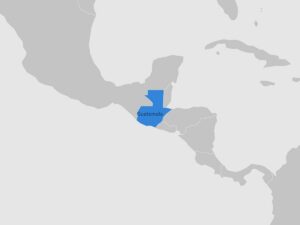
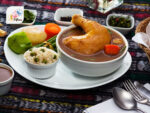
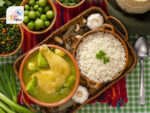
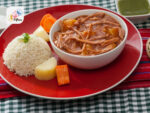



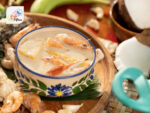
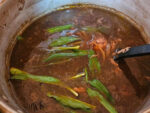
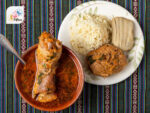
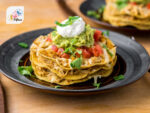

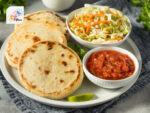
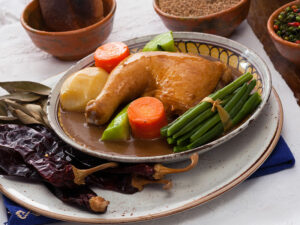
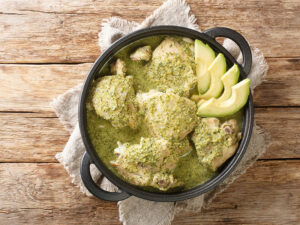
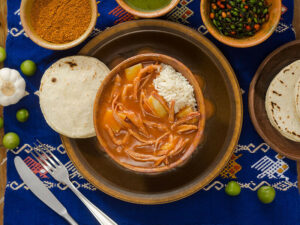
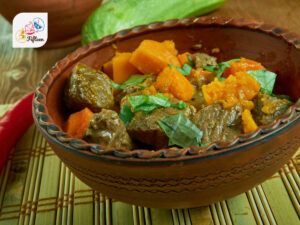
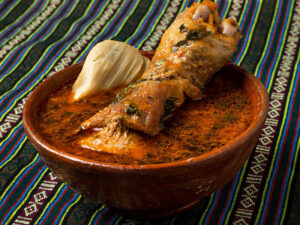
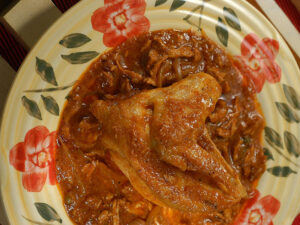
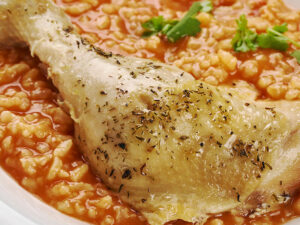
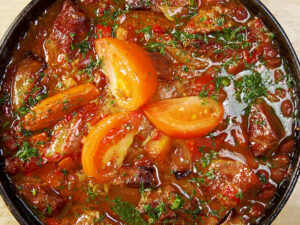
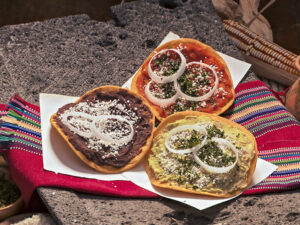
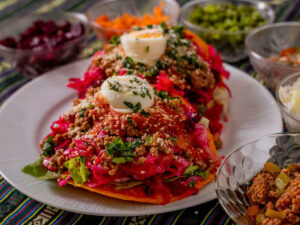
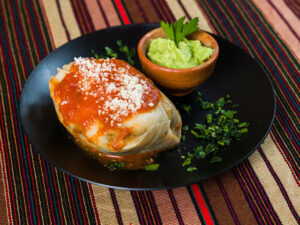
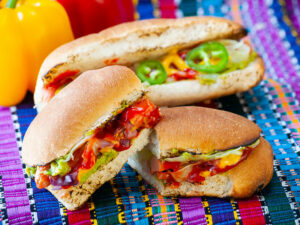
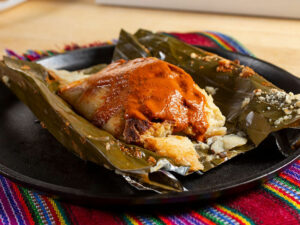
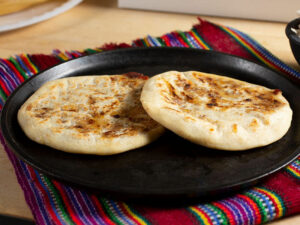
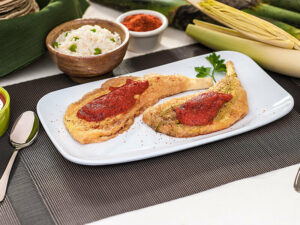
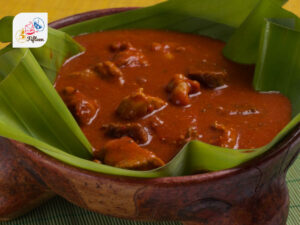

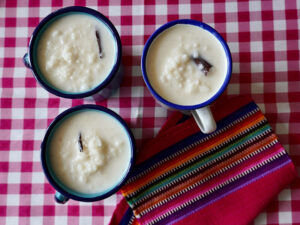


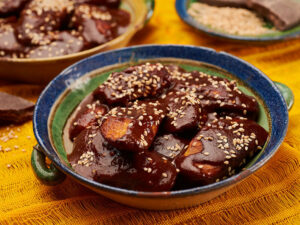

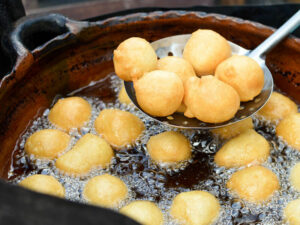
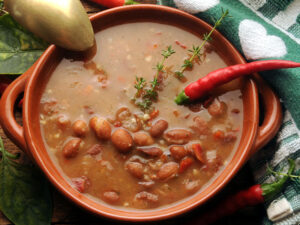
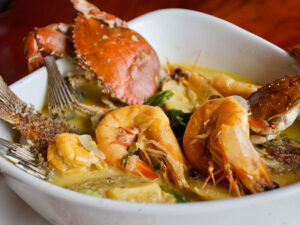
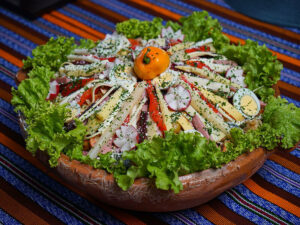
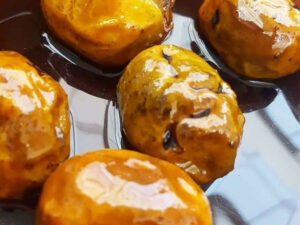
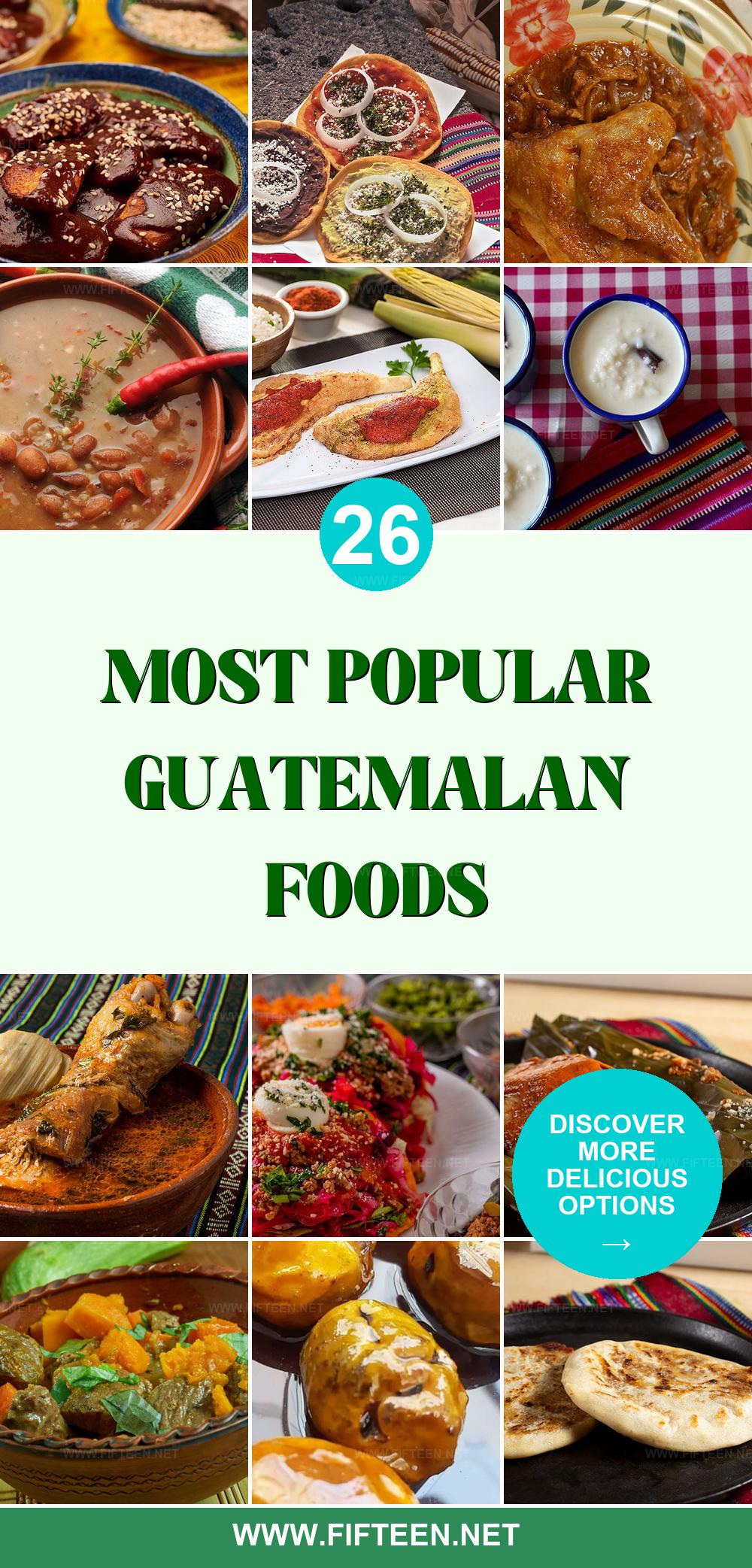
Jamie Scott
Editor in Chief, Senior Content Writer
Expertise
Home Cooking, Meal Planning, Recipe Development, Baking and Pastry, Food Editor, Cooking-video Maker, Western Food Evaluation Expert
Education
Le Cordon Bleu College of Culinary Arts
Local Community College, New York, NY
Jamie Scott is a skilled culinary expert and content creator specializing in Western cuisine. With over 15 years in the culinary field and formal training from Le Cordon Bleu, Paris, Jamie deeply understands how to blend nutrition with delicious flavors. His passion for cooking matches his commitment to making healthy eating accessible and enjoyable.
On Fifteen.net, Jamie brings a fresh perspective to classic dishes and beverages, offering readers insightful recipes, cooking tips, and a fresh view on meal planning that emphasizes taste, health, and simplicity.